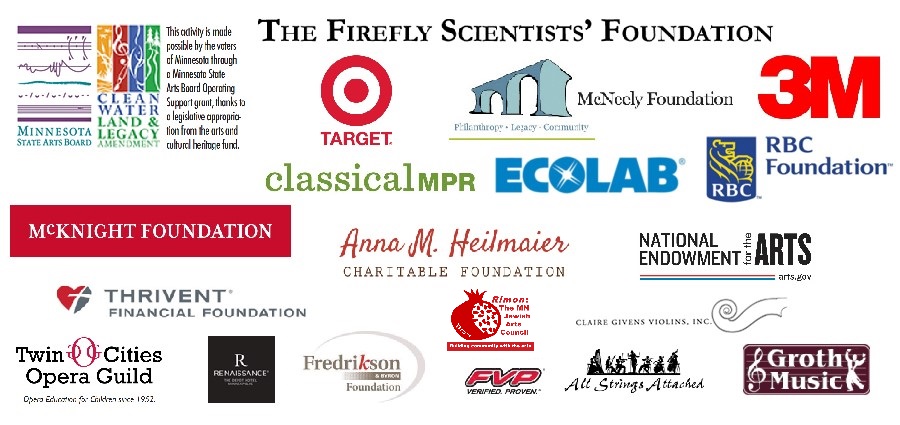Please click here for COVID-related updates
Gao Hong, Chinese Pipa
Gao Hong, Chinese Pipa
Fri. Apr 21 First Covenant Church 7pm
1280 Arcade Street, St. Paul, 55106
Sat. Apr 22 Holy Cross Catholic Church 2pm
1621 University Avenue NE, Minneapolis, 55413
Program
OvertureJose Nunes Garcia
Spring and Autumn from Le quattro stagioni (The Four Seasons)Antonio Vivaldi
Gao Hong, Chinese pipa
Symphony No. 2Ludwig van Beethoven
Program Notes
OvertureJose Nunes Garcia (1767-1830)
Jose Nunes Garcia was born in Rio de Janeiro, Brazil to mulatto parents. He showed early musical promise and received quality music training. In 1792 he became a priest for which, because of his lineage (“mixed blood, and not pure”), he encountered some prejudice. To become a priest, he had to pass examinations. The first was to prove his true Catholic faith, which with support from his parents and friends he was successful. The second was to prove that he had no “color defects.” For this he asked that the requirement be dismissed, which it was, and he was accepted into the priesthood. In 1798, following the death of deacon Lopes Ferreira, he was appointed Master of the Royal Chapel. Throughout his career, he was subjected to prejudices, but because of his talent was able to overcome them.
Nunes Garcia was well-versed in the classical composers of his day, including Mozart and Haydn, and he composed in their same classical style. Most of his output was church-related and for choir. However, he wrote a few secular works, including the Overture heard on this set of performances. jf
Spring and Autumn from Le quattro stagioni (The Four Seasons)Antonio Vivaldi (1678-1741)
Antonio Vivaldi composed in what is now termed the high baroque period of music and architecture, roughly spanning the years of 1700-1750. He was a master composer and teacher, and influenced many of his contemporaries, including Johann Sebastian Bach. In fact, Bach “borrowed” some of Vivaldi’s works (there were no copyright laws in those days), simply changed the orchestration, and called them his own.
Among the over 400 (some say closer to 500) concertos composed by Antonio Vivaldi, The Four Seasons are undoubtedly among his most popular and most performed works. Published in 1725, these three-movement concertos for violin and string orchestra each depict, in musical terms, descriptions of the seasons being portrayed. Vivaldi also wrote accompanying sonnets, thereby providing written descriptions for the listener’s enlightenment. On this set of performances, Gao will perform Spring and Autumn because, as she described to me, they lay much better on the pipa. Following is a translation of the sonnets accompanying the concertos. jf
Spring – Concerto in E Major
Allegro
Springtime is upon us.
The birds celebrate her return with festive song,
and murmuring streams are softly caressed by the breezes.
Thunderstorms, those heralds of Spring, roar, casting their dark mantle over heaven,
Then they die away to silence, and the birds take up their charming songs once more.
Largo
On the flower-strewn meadow, with leafy branches rustling overhead, the goat-herd sleeps, his faithful dog beside him.
Allegro
Led by the festive sound of rustic bagpipes, nymphs and shepherds lightly dance beneath the brilliant canopy of spring.
Autumn – Concerto in F Major
Allegro
The peasant celebrates with song and dance the harvest safely gathered in.
The cup of Bacchus flows freely, and many find their relief in deep slumber.
Adagio molto
The singing and the dancing die away
as cooling breezes fan the pleasant air,
inviting all to sleep
without a care.
Allegro
The hunters emerge at dawn,
ready for the chase,
with horns and dogs and cries.
Their quarry flees while they give chase.
Terrified and wounded, the prey struggles on,
but, harried, dies.
Symphony No. 2Ludwig van Beethoven (1770- 1827)
A great deal has been written about Beethoven, his concertos and symphonies. He was of course one of the most innovative of all composers, and his use of the orchestra – the way he combined the instruments to create what became new sounds for his audiences – was a marvel. What is even more fascinating about these works is their general make-up. If one analyses them, s/he finds mostly scales and arpeggios, and often some very simple motives. Yet, from what one would think of as nondescript materials, Beethoven fashioned some of the most exciting and dramatic music in the entire repertoire.
Beethoven’s symphonies extended the boundaries of the “classical symphonic form” that were established by Haydn and Mozart. His mastery and creative use of harmonies, orchestration, and sense of drama and timing (sudden softs, louds, driving rhythms, and clever use of accents) allowed him to compose some of the most enduring and beloved masterpieces in the entire orchestral repertoire. In fact, many of the great composers who followed him would not compose more than nine symphonies, in homage to the nine that he had created.
Beethoven started to compose his second symphony in 1801 and finished it in 1802. It had its premiere along with his third piano concerto and the oratorio, Christ on The Mount of Olives, on April 5, 1803. Beethoven of course played piano for the concerto, and the young conductor Ignaz von Seyfried, from the Theater an der Wien, turned pages during the concerto. Afterwards he wrote:
…but heaven help me! That was easier said than done. I saw almost nothing but empty leaves at the most on one page and on another a few Egyptian hieroglyphs wholly unintelligible to me and scribbled down to serve as clues for him. He played nearly all of the solo part from memory since, as was so often the case, he had not had time to put it all down on paper. He gave me a secret glance whenever he was at the end of one of the invisible passages, and my scarcely concealable anxiety not to miss the decisive moment amused him greatly and he laughed heartily at the jovial supper which we ate afterwards.
1802 was a very productive time for Beethoven, and it was during this time that, among several other works, he composed the Moonlight Sonata. In letters to friends he wrote:
…For a while now I have been gaining more than ever in physical strength and in mental strength, too…. Every day I come closer to my goal, which I can sense but don’t know how to describe… I live only in my notes, and with one work barely finished, the other is already started; the way I now write I often find myself working on three, four things at once.
Even though he was being very productive, he recognized the onset of his hearing loss, and the dispair it would cause. He wrote his Heiligenstadt (will) in October 1802, “as the leaves of autumn fall and are withered—so likewise has my hope been blighted.” In spite of the oncoming problems, he wrote that he would “seize fate by the throat.”
Beethoven continually developed and expanded his compositional technique and approach. His first symphony, which was very popular, was written very much in the mold of Haydn and Mozart’s later symphonies. With his second symphony, Beethoven already started expanding to more “advanced” directions and was straying from the tried and true. It is no wonder that one critic wrote:
…the First Symphony is better than the later one because it is developed with lightness and is less forced, while in the Second the striving for the new and surprising is already more apparent….
The Second Symphony is often somewhat undervalued/overshadowed because it preceded the third symphony, the Eroica, the fifth symphony (arguably the most famous four note combination in the entire repertoire), and of course the ninth. I think a better way to think about this work is simply to liken it to all of Bethoven’s symphonies as one of many great works, a testament to his creative genius. jf

